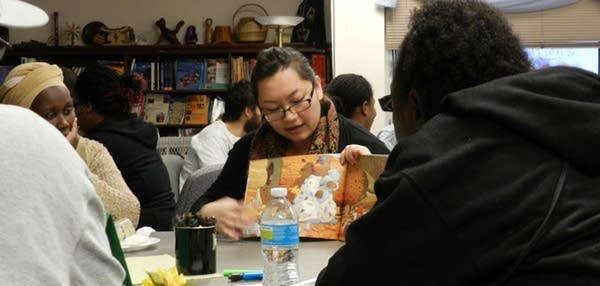More Minn. students earning college credit in high school

As more Minnesota students are earning college credit in high school, a new state study is encouraging lawmakers to consider ways to continue boosting enrollment.
The study by Macalester College's Center for School Change looked at students enrolling in 'dual credit' programs, which allow students to earn high school and college credit. But some recommendations from the study could prove tough to pass.
It's impossible to tell what percentage of Minnesota high school students take some kind of college-level course because the data doesn't account for students who enroll in multiple programs. But thousands of students do enroll in programs like Advanced Placement and International Baccalaureate, where end-of-year tests determine how much college credit you receive.
AP is the most popular: 35,000 students took at least one AP test last year. That's up 62 percent from five years ago. Enrollment in IB is up 76 percent.
Create a More Connected Minnesota
MPR News is your trusted resource for the news you need. With your support, MPR News brings accessible, courageous journalism and authentic conversation to everyone - free of paywalls and barriers. Your gift makes a difference.
The report emphasizes the thousands of dollars families can save in tuition by earning college credit in high school and notes that students feel more prepared and usually do better in college.
"When a student has a trial run, then when they make that first step, they know what it feels like," said Joan Arbisi Little, Center for School Change associate director. "They know what people look like, where to go for help... it's not that completely new experience."
Paj Ntaub Lee was 2 when her family emigrated from Thailand -- a place where Lee's parents understood fifth grade to be a normal stopping point in school. There was no real concept of college.
"Not having anyone in your family going to college or not knowing anyone who did... was very hard," Lee said.
But Lee knew she wanted to go to college. At Johnson High School in St. Paul, she took both Advanced Placement and Concurrent Enrollment courses that earned her college credit.
"I felt better prepared for college," Lee said. "Just period. It's a positive feeling, you carry that over."
Lee graduated from St. Olaf two years ago and now works for the Center for School Change where she helped write the new report on dual credit programs. The center's director, Joe Nathan, said they are seeing an increase in students of color and from low-income families earning college credit before graduating from high school.
The number of Hispanic and African-American students taking AP exams has more than doubled during the past five years. More than 1,000 African-American students took at least one AP exam last year; only 400 did in 2005-6.
Three of the report's six recommendations focus on Post Secondary Enrollment Options. The program lets high school students take college classes on a college campus. More than 5,400 did so last year, a slight decline from five years ago.
Right now, only 11th and 12th graders who meet certain eligibility requirements can take PSEO courses. Nathan said he'd like to see PSEO eligibility relaxed and expand the program to earlier grades on a limited basis. He also wants to drop a law that prohibits colleges and universities from specifically advertising PSEO as a money saver.
"We think families need to clearly understand one of the key benefits - not the only benefit - but one of the key benefits, which is that if youngsters enter college having taken challenging classes, they will be able to save themselves and their families literally thousands of dollars."
But PSEO has its critics, largely because school districts lose money. When high schoolers go to a college campus for class, the college gets most of the state funding that the district would have. PSEO is the only dual credit program where districts lose state funding. It's also the only program where enrollment is down.
Last year, 547 Anoka-Hennepin students took PSEO classes, including 210 who went full time. That cost the district more than $2 million in state funding. That's why Superintendent Dennis Carlson prefers a program called Concurrent Enrollment. Students still enroll in college courses, in some cases with college professors, but classes are held in the high schools. More than 21,000 students took Concurrent Enrollment classes across Minnesota two years ago, the most recent year data were available.
"We don't have the money loss with that," Carlson said. "The kids can stay in activities, athletics, music and theater and art, and so on - and still graduate with college credit. That's really the direction we'd like to go. So it's not that I'm anti-PSEO, but this is the plan that we'd like to promote."
State lawmakers would have to approve any PSEO change. Rep. Sondra Erickson, R-Princeton, chairs a key House education committee. "The school districts like to keep students on campus - I understand that," Erickson said. "But we also want to promote the opportunity for those who are ready to go off-campus."
Erickson admits PSEO would be the toughest of the dual credits programs to expand, but she still plans to have the debate this year.
